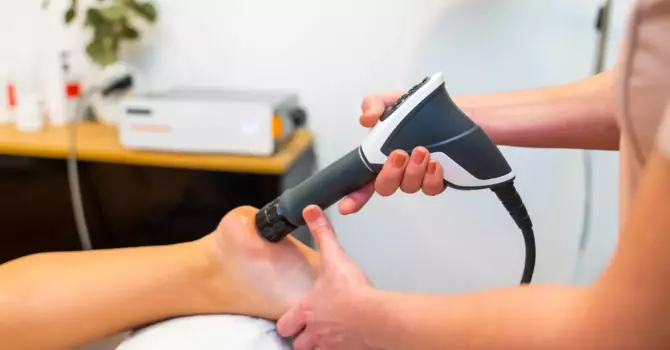
Shoulder Impingement Syndrome: What You Need to Know
Shoulder pain is one of the most common musculoskeletal complaints, particularly among active individuals, athletes, and those with occupations that involve repetitive upper body movements.
One of the most frequent culprits? Shoulder Impingement Syndrome.
Also known as subacromial impingement, this condition can cause persistent shoulder pain, limited range of motion, and decreased performance in everyday activities. Understanding what causes it and how to manage it effectively is key to recovery and prevention.
In this post, we'll explore what shoulder impingement is, why it occurs, how it's diagnosed, and what you can do to treat and prevent it.
What Is Shoulder Impingement Syndrome?
Shoulder impingement occurs when the tendons of the rotator cuff muscles or the subacromial bursa (a small fluid-filled sac that cushions the joint) get pinched or compressed under the acromion process, a bony projection of the shoulder blade.
This pinching leads to:
- Swelling and inflammation
- Pain with overhead movement
- Limited mobility
- Potential tendon degeneration over time
Chronic impingement can lead to rotator cuff tendinopathy or tears over time, making early recognition and intervention essential.
Common Symptoms of Shoulder Impingement
Symptoms can vary depending on severity but often include:
- Pain when lifting the arm overhead or behind the back
- Pain or discomfort at night, especially when lying on the affected shoulder
- Weakness in the shoulder or upper arm
- A dull ache in the front or side of the shoulder
- Sharp pain during specific movements (like reaching or throwing)
- Clicking or catching sensation in the shoulder
Who Is Most at Risk?
Shoulder impingement is most common in individuals who perform repetitive overhead or upper body movements, including:
- Athletes: swimmers, baseball players, tennis players, CrossFit athletes
- Manual laborers: painters, construction workers, mechanics
- Office workers: poor posture and ergonomics can contribute to shoulder dysfunction
Causes of Shoulder Impingement
There are two contributing categories: structural (anatomical) and functional (movement-related).
1. Structural Causes
- Bone spurs on the acromion or subacromial space
- Hooked acromion shape (a natural anatomical variant)
- Thickening of the soft tissues due to chronic inflammation
2. Functional Causes
- Poor scapular control or posture
- Weakness of the rotator cuff or surrounding muscles
- Tightness in the chest, neck, or upper back
- Repetitive overhead motion without proper form or recovery
At Arthrology Chiropractic, we often see impingement related to movement dysfunctions rather than purely structural issues, which is good news because it means the condition is usually reversible.
Diagnosing Shoulder Impingement
A thorough history and physical exam are key. Diagnostic steps may include:
- Observation and palpation for pain and inflammation
- Range of motion testing (active and passive)
- Orthopedic tests such as:
- Neer's test
- Hawkins-Kennedy test
- Painful arc test
- Functional movement assessment of the shoulder and scapula
- Referral for imaging (X-ray or MRI) if rotator cuff tear or bone spur is suspected
Treatment Options for Shoulder Impingement
The goal is to reduce inflammation, restore proper mechanics, and strengthen supporting structures. Treatment typically includes:
1. Manual Therapy
- Joint mobilization to improve glenohumeral and scapular movement
- Soft tissue therapy to release tension in overactive muscles
- Dry needling or acupuncture for muscle tone reduction and pain relief
2. Therapeutic Exercise
- Strengthening the rotator cuff and scapular stabilizers
- Restoring thoracic spine mobility
- Addressing posture and ergonomic modifications
3. Activity Modification
- Reducing or modifying aggravating activities (like overhead lifting or throwing)
- Improving warm-up and recovery strategies for athletes
- Postural education for those with sedentary lifestyles
4. Adjunctive Therapies
- Shockwave or laser therapy can help reduce inflammation and pain, as well as improve tissue healing.
- Taping techniques to offload painful structures during healing.
Surgery is rarely necessary and is typically reserved for cases involving rotator cuff tears or persistent impingement that does not improve with conservative care.
Preventing Shoulder Impingement
Prevention focuses on maintaining a strong, stable, and mobile shoulder joint.
1. Strengthen the Right Muscles
- Rotator cuff (supraspinatus, infraspinatus, teres minor, subscapularis)
- Scapular stabilizers (serratus anterior, rhomboids, mid/lower traps)
- Core and thoracic spine to support posture
2. Optimize Posture
Forward head posture and rounded shoulders reduce the space available in the subacromial area. Daily postural awareness is crucial, especially for individuals who spend their entire day at a desk.
3. Maintain Mobility
Regularly stretch and mobilize:
- Thoracic spine
- Shoulder capsule
- Pecs and anterior shoulder
- Cervical spine (if involved)
4. Warm Up Properly
Engaging in overhead activities without warming up increases the risk of injury. Always include dynamic mobility drills before lifting or sports.
5. Address Pain Early
Minor shoulder pain can escalate if left untreated. Early assessment can help prevent more serious issues, such as rotator cuff tears or chronic dysfunction.
Chiropractic and Shoulder Impingement
At Arthrology Chiropractic, we take a movement-based, functional approach to shoulder impingement. We go beyond the site of pain to evaluate how your posture, thoracic mobility, scapular control, and muscular imbalances contribute to your symptoms.
Through a combination of manual therapy, corrective exercise, and education, we help restore optimal shoulder function and reduce your chances of re-injury, whether you're an athlete or someone who just wants to sleep on your side again without pain.
Final Thoughts
Shoulder impingement can be frustrating, but it's also highly treatable with the proper care. By addressing the root causes and strengthening the supporting structures, you can get back to moving pain-free and confidently.
If you're experiencing shoulder pain that just won't go away, don't ignore it. Early intervention leads to faster recovery and better long-term outcomes.

Edward Boudreau
Contact Me



.png)
